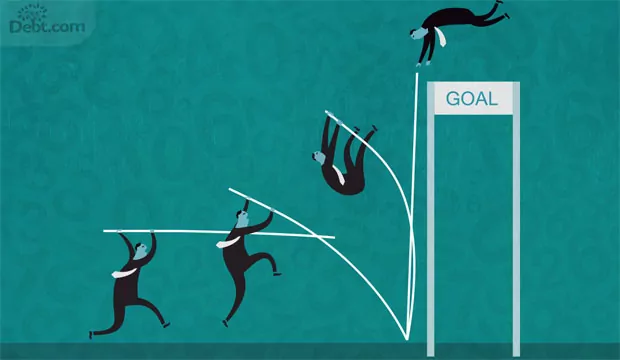We understand that navigating the world of credit can feel like deciphering a complex puzzle. But guess what? With the right strategies and a bit of know-how, you can piece it all together. A robust credit score isn’t just a number; it’s a passport to better loan rates, easier approvals, and a host of other financial perks. Whether you’re at the starting line, aiming to reach new heights, or finding your way back after a few missteps, we’re here with the map and compass to guide you. Building credit is an adventure, and every step you take brings you closer to your financial goals. Ready to embark on this journey? Let’s chart the course together!
The Basics of Building Credit
Building credit is akin to crafting a reputation. It’s about demonstrating to the financial world that you’re someone they can bank on. Just as trust in any relationship is built over time with consistent actions, so is a robust credit profile. Let’s delve deeper into the strategies that can help you lay a solid foundation:
Get a secured credit card
This is your entry ticket into the world of credit. By putting down a deposit, you get a credit limit in return. It’s a safe way for lenders to trust you, and as you use and repay, you’re essentially building your credit reputation from the ground up.
Credit-builder loans
Think of this as a sandbox where you can practice. The bank will hold onto the money you borrow in a secured account. As you repay the loan, you’re proving your reliability, and at the end of the term, you get your money back, plus a stronger credit report.
Find a cosigner
There are times when our credit history isn’t enough. In such cases, a cosigner with a good credit history can be your beacon. They promise to repay the loan if you can’t, making lenders more comfortable to lend to you.
Be an authorized user
Imagine benefiting from someone else’s punctuality and good habits. By becoming an authorized user on their credit card, you get to do just that. Their good credit behavior reflects positively on you too.
Watch your credit spending
It’s not just about having credit; it’s about how you use it. Using a huge chunk of your available credit can signal potential over-reliance on credit. Aim to spend less than 30% of your limit. It’s a sign to lenders that you’re disciplined and cautious.
Have credit variety
Diversity is the spice of life, and your credit profile is no different. Having a mix of credit types, like installment loans (think car loans) and revolving credit (credit cards), shows lenders you can handle different types of credit responsibly.
Make timely payments
This can’t be stressed enough. Every time you pay a bill on time, it’s a positive mark on your credit report. Over time, these add up, and a history of on-time payments can significantly boost your credit score.
Remember, every step you take in the credit world leaves a footprint. By following these strategies, you ensure that those footprints lead to a path of financial trust and reliability.
Pitfalls to Watch Out For
Navigating the credit landscape can be tricky, and while there are many right turns, there are also some pitfalls you’d want to sidestep:
Beware of scams
Heard of using fake Social Security numbers or Employer Identification Numbers to boost credit? It’s not only a big red flag but also illegal. We can’t stress this enough: always play by the rules. Your future self will thank you.
Missed payments
Think of your credit journey as a marathon. Consistency is key. Missing a payment is like tripping and falling. It can set you back, and recovering takes time. Set reminders, automate payments, do whatever it takes to ensure you’re always on time.
Overusing credit cards
Imagine your credit limit as a glass of water. You never want to fill it to the brim; spills are messy. Maxing out can signal to lenders that you might be a high-risk borrower. Aim to keep your balance well below your limit. It’s a sign of responsible credit management.
Juggling too many credit lines
It’s tempting to open multiple accounts, especially with those attractive offers floating around. But remember, every time you apply for credit, it leaves a mark on your report. Too many applications in a short time can raise eyebrows. Pace yourself and think long-term.
Forgetting old accounts
It’s easy to focus on the new and shiny, but in the credit world, history matters. Those old accounts, if managed well, showcase your long-standing relationship with credit. It’s like a badge of honor. So, dust off those old cards, use them occasionally, and keep them in good standing.
Remember, building credit is as much about the dos as the don’ts. By being aware of these pitfalls and navigating around them, you’re setting yourself up for a smoother journey towards stellar credit.
Special Mentions
- Owing the IRS: Taxes might not be fun, but they’re essential. An unpaid tax lien isn’t just a debt; it’s a shadow on your credit report that can linger for a long time. It’s more than just the money owed; it’s about the trust you establish with financial institutions. So, always ensure you’re square with the IRS. If you’re struggling, consider setting up a payment plan or seeking professional advice.
- Federal Student Loans: Life happens, and sometimes, federal student loans can take a hit. But here’s the silver lining: federal loans come with a unique opportunity for redemption. If you find yourself in default, making six consecutive on-time payments can not only bring your loan back to a current status but also erase the negative marks from the default on your credit report. It’s like getting a second chance to make a first impression. And remember, this benefit is exclusive to federal student loans, so it’s worth taking advantage of if you’re in this situation.
Building credit isn’t a sprint; it’s a marathon. Every decision, every payment, and every strategy plays a role in shaping your financial future. We’re here to guide, support, and cheer you on at every milestone. With the right approach, a sprinkle of patience, and a commitment to making informed choices, the path to stellar credit becomes clearer. Together, we’ll navigate the twists and turns, ensuring you’re always on the right track to achieving your financial goals.







